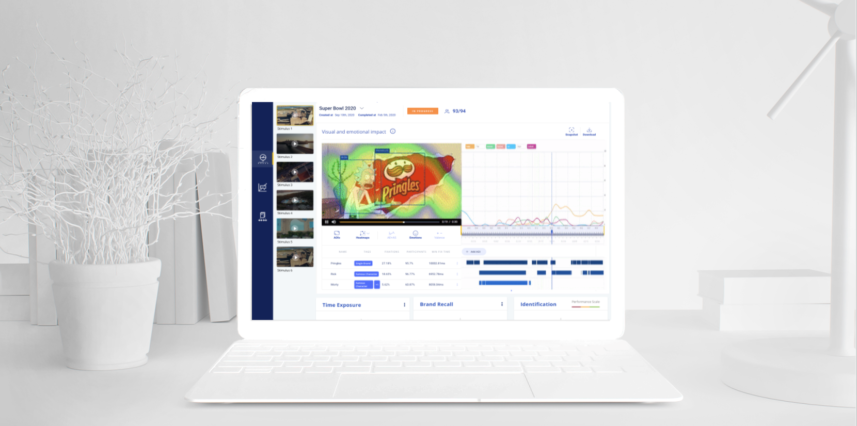How the public perceives your brand is an infinitely compelling subject. From their positive (or negative) associations to how they relate to the product, there are tons of insights that you can find to communicate with audiences more effectively. A focus group, for instance, can only take you so far. That is why modern market research methods can help you explore the depths of this complex subject easily.
Tools like emotional and attention recognition can help you understand your position among other brands in different industries. Take a look at the kind of valuable information that you can discover. But first, learn more about the process.
The How: Our methodology
Our content testing platform uses biometric technology + surveys to analyze participants’ emotional responses in real-time as they engage with the contents (logos, mood boards, packages, and more). We do this 100% remotely through consumers’ laptop’s webcam in an opt-in process that brings agility & data depth to market research.

The Why: What you can learn from the study
Emotional Impact
Compare the performance of your brand (logos and other images) with other brands in your industry. By doing this, you can see how different audience segments (divided into regions, genders, ages, socioeconomic levels, and more) perceive it compared with your competitors. You can compare mood boards and review the emotional impact they generate. Emotions like happiness, surprise, confusion, disgust, or anger, as well as satisfaction, admiration, or fascination (and the intensity of the feeling!).
Why is this important? you can work with your marketing team and your creative agency to understand if you are achieving the business goals you want with your brand, and get specific insights on how to optimize public perception for that brand.
Brand Affinity and Closeness
Discover the percentage of participants that feel a connection to your brand and your competitors. Understand the existing emotional bond between participants and your brand.
What are the main attributes that participants associate with your brand? Flavor, popularity, relatability, energizing qualities, innovation, originality, inspiration, and more. You can also calculate the attributes that the audience considers more relevant and desirable.
When is your brand consumed?
Understand how consumers are associating your brand with a specific activity, mood, time of the day, etc. These types of associations allow you to connect with audiences easily, for instance, by adding these scenarios or activities to your advertising. Check the time of day, or days of the week, in which your product is consumed or purchased. This information helps a lot when it comes to personalized digital marketing. Know when your audience is more open to connecting with you!
Understand the themes that are most important for different age groups.
Go beyond generalizations about boomers, millennials, and gen Z. Analyzing different age segments allows you to communicate with them more easily because you know their priorities and expectations.
Imagine you are testing a food brand. Do they care more about their health or prefer flavor and fun? Or do they value convenience and ease of consumption? Learn how to speak their language and personalize your communication.
Which segments are being neglected by most brands?
When it comes to innovation, this information can be a game-changer. What are the unknown areas of opportunity that you can explore? What are territories where your brand can discover fertile ground for innovation and originality?
Our holistic methodology is flexible and can adapt to your brand’s unique needs. Are you ready to start testing your content? Learn more about Synapbox’s content testing platform and the future of market research.




